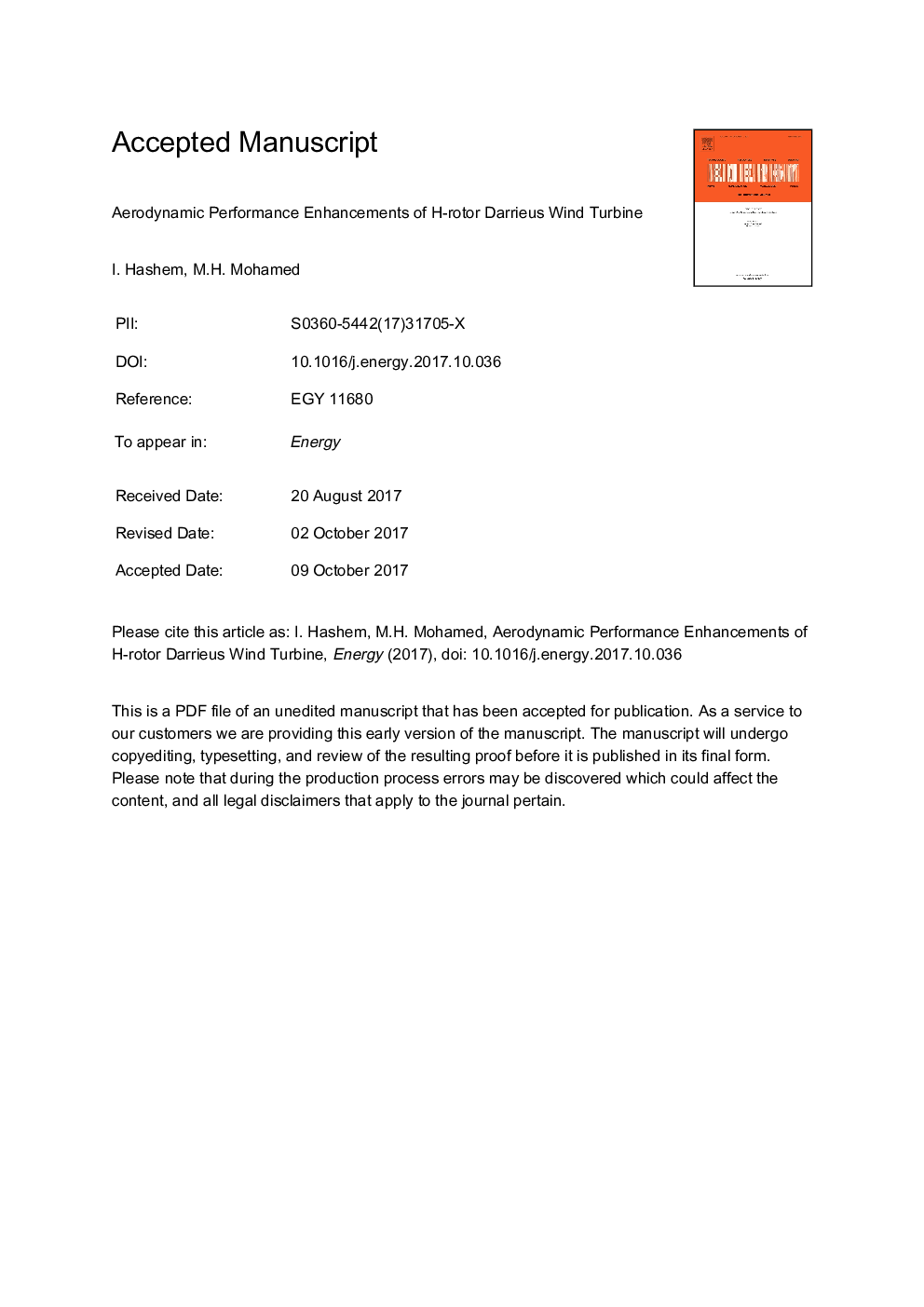| Article ID | Journal | Published Year | Pages | File Type |
|---|---|---|---|---|
| 8072526 | Energy | 2018 | 34 Pages |
Abstract
Vertical axis wind turbines like Darrieus turbines are very interesting type of wind turbines at domestic zones which have low wind speed, but this type has a low performance compared quantitatively to horizontal axis wind turbines. Further research work is needed to increase its performance to match the higher demand of the power generation in small-scale applications. The main target of the current work is to increase the output power coefficient Cp of a straight-bladed Darrieus wind turbine (H-rotor). The aerodynamic performance assessment will be carried out for 24 new airfoils (symmetric and non-symmetric) as the sectional profiles of the Darrieus turbine blade in order to improve the generated power. The present two-dimensional simulation concentrates on eight series of new airfoil shapes. Furthermore, the effect of using a wind-energy collecting structure called “wind-lens” which consists of a diffuser and flanges with Darrieus turbine is computationally examined. The current results indicated to some new shapes suitable for H-rotor Darrieus turbine with considerable performance improvement. It was demonstrated that the symmetric S1046-type is the best performing airfoil for typical tip-speed ratio ranging from 2 to 7. The three-bladed Darrieus turbine with S1046 as a sectional profile introduced a maximum power coefficient Cp,max equal to 0.3463. In this study, the performance of three wind-lens configurations with different diffuser types is investigated (i.e., flat-panel, curved-surface, and cycloidal-surface). Regarding power augmentation, the results affirmed that adopting diffuser with a cycloidal-surface is more effective than both flat-panel and curved-surface diffusers. The results indicated that the three-bladed Darrieus turbine (consists of S1046 airfoils) equipped with a cycloidal-surface diffuser introduced a maximum power coefficient Cp,maxand equals to 1.3662 and elucidated power augmentation by a factor of about 3.9 as compared to an open Darrieus turbine (conventional design).
Keywords
Related Topics
Physical Sciences and Engineering
Energy
Energy (General)
Authors
I. Hashem, M.H. Mohamed,
